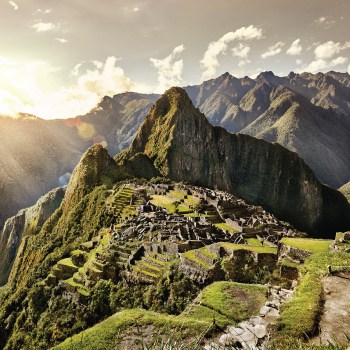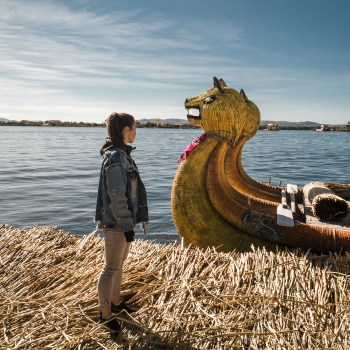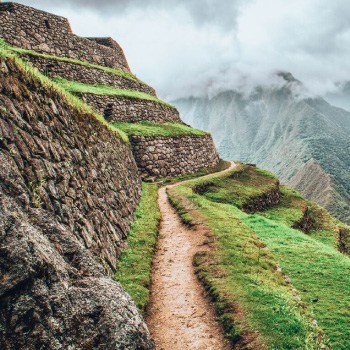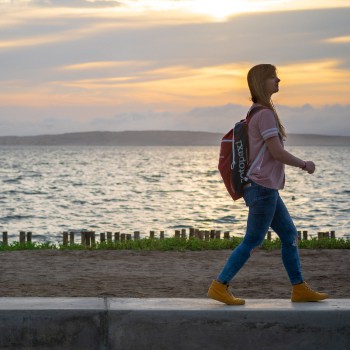The Very Start
According to ancient Inka mythology, Cusco was founded around 1200 A.D. by Ayer Manco along with his sister Mama Ocllo (later to be his wife). Ayer Manco had been sent by the Inka Gods to bring order to the region and to teach the ever growing malevolent natives a better way of life. The Gods told Manco that wherever his staff sunk into the ground, is where he would settle and create his empire. It was on a small flat area between two small rivers, the Huatanay and Tullumayo, that his golden staff sunk in to the ground. The area would later be known as Q’osqo (or Cusco by colonial times).
The Mighty Inka Empire
Ayer Manco who later become known as Manco Capac, meaning “illustrious,” was the first ruler of the Inka Empire. It wasn’t until the 9th Inka Ruler Pachakuti came to power that the empire started to grow rapidly. Q’osqo was surrounded by marauding tribes, many of which were in conflict with each other. Pachakuti and his son Topa Inka were talented generals and over the next 50 years or so created an empire that stretched as far north as present day Quito and south to the Maule River (just south of Santiago in Chile). Cusco became the spiritual and political centre of the entire Inka Empire.
Cusco during Inka Times
At the centre of the city was a great square called Haukaypata. Roads led from Haukaypata to the four quarters of the Empire or the four Suyos (Qollasuyu, Kuntisuyu, Antisuyu and Chinchaysuyu). According to the book “The Royal Commentaries,” written by the Spanish chronicler Garcilaso de la Vega, Cusco was a magnificent place full of beautiful shrines, palaces and temples. One of the most impressive and important buildings was the Inka Temple of the Sun – Korikancha. A beautiful temple lined with sheets of solid gold and a garden with plants made of leaves of beaten gold with stems of silver. According to archaeological studies, fewer than 4,000 buildings, mostly single story stood in the principle area of Cusco. In accordance with traditional Andean belief, Cusco was divided into two-halves, the first was upper or hanan Cusco, the second lower Cusco or hurin. The division was marked by Haukaypata, and during Inka times some family linages were confined to either hanan or hurin Cusco.
The Arrival of the Spanish in Cusco
When the Spanish arrived in Peru in 1532, they found the Inka Empire at the end of a 5 year civil war. The two brothers Huáscar and Atahualpa had been in a fierce battle over who would succeed as emperor after their father Huayna Capac died without naming an heir. The battled ended when Atahualpa, with the support of the mighty Inka army, killed Huáscar taking the title of Sapa Inka. The Spanish knew that Atahualpa was in the northern town of Cajamarca, and with a small army of just 168 men Pizarro captured Atahualpa. In a bid to save his life, Atahualpa offered the riches of Cusco as a ransom for his life. Pizarro sent 3 generals to Cusco, where they took as much of the wealth as they could, leaving the rest locked up in a store house for their return. Cusco finally fell to the Spanish in November 1533. After being baptised into the Catholic religion and swearing allegiance to the Spanish crown, Atahualpa was later killed after it was thought that he was plotting to over throw the Spanish. Under the control of the Spanish, Cusco was systematically looted of all of its riches and ancient Inka buildings made way for new colonial structures.
Cusco Today
Standing in Cusco’s main square – Plaza de Armas, it is hard to imagine what Inka Cusco must have been like. Many of the grand Inka buildings described by ancient chroniclers simply don’t exist anymore. The colonial square of Plaza de Armas stands partially where the great Inka square Haukaypata once stood, and ornate baroque buildings and churches dominate the city’s streets. However, remains of some impressive Inka buildings still exist in the city, like the Inka Temple of the Sun – Korikancha and the Palace of Inka Roc’a on Hatunrumiyoc Street .
Many international visitors aren’t aware of Cusco’s mighty history, simply passing through the city on the way to the fabled citadel of Machu Picchu. However, Cusco was once the most power city in the continent, the political and spiritual centre of the mighty Inka Empire; a city comparable in stature to Rome, Athens or Cairo.
Lima is one of South America’s most vibrant and diverse hotspots for a night out. The city takes on a vibrant feel as the night draws in, and the opportunities to enjoy a great night out become more obvious.
Lima nightlife offers something for everyone. If you are looking for a relaxing evening dining with friends, or a more upbeat nightclub then there are many options. Equally, not all nightlife in Lima needs to include drinking! Perhaps an alternative night out at the cinema, bowling with your family or a night at one of Lima’s many casinos maybe more up your street.
Many people that visit Lima never really experience the full potential of the city,
Lima is one of South America’s most vibrant and diverse hotspots for a night out. The city takes on a vibrant feel as the night draws in, and the opportunities to enjoy a great night out become more obvious.
Lima nightlife offers something for everyone. If you are looking for a relaxing evening dining with friends, or a more upbeat nightclub then there are many options. Equally, not all nightlife in Lima needs to include drinking! Perhaps an alternative night out at the cinema, bowling with your family or a night at one of Lima’s many casinos maybe more up your street.
Many people that visit Lima never really experience the full potential of the city, and often stay close to their hotel. Lima is a city of 9 million people, and although not all districts are desirable for tourists, you may have to travel a little to fully appreciate all the nightlife available.
It is important to remember that if you are out late a night, you need to always be aware of your safety. Although Lima has come on leaps and bounds in the last few years, it is still a big city where opportunist crime does take place. Take care of yourself, don’t walk around drunk late at night, stay with friends and don’t walk home alone, and always use registered taxis. Remember these simple things, and you’ll experience the best of one of South America’s greatest cities.
and often stay close to their hotel. Lima is a city of 9 million people, and although not all districts are desirable for tourists, you may have to travel a little to fully appreciate all the nightlife available.
It is important to remember that if you are out late a night, you need to always be aware of your safety. Although Lima has come on leaps and bounds in the last few years, it is still a big city where opportunist crime does take place. Take care of yourself, don’t walk around drunk late at night, stay with friends and don’t walk home alone, and always use registered taxis. Remember these simple things, and you’ll experience the best of one of South America’s greatest cities.










